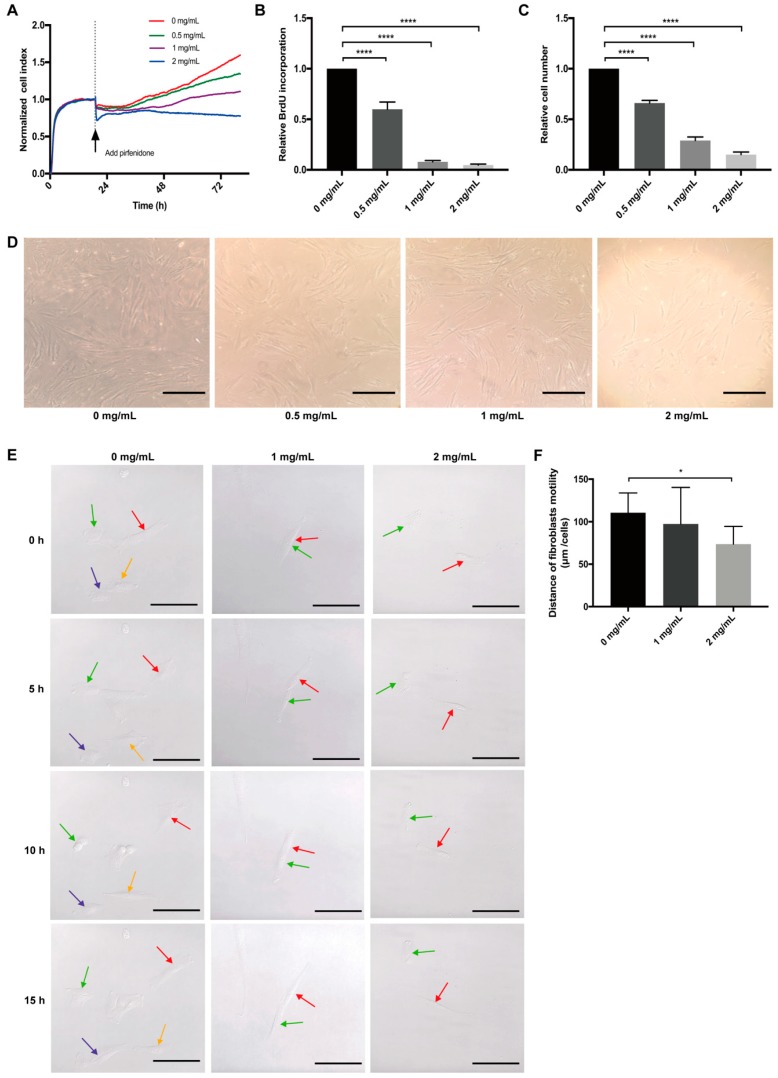Figure 1.
Pirfenidone suppresses the proliferation of primary human intestinal fibroblasts (p-hIFs). (A) Intestinal fibroblasts were seeded in the xCELLigence system for 18 h and were then exposed to increasing concentrations of pirfenidone (0, 0.5, 1, and 2 mg/mL) for 72 h. Cell index curves showed pirfenidone dose-dependently inhibited the proliferation of fibroblasts. (B) Pirfenidone dose-dependently decreased BrdU incorporation (n = 3, **** p < 0.0001 for all groups) and (C) p-hIF cell numbers (n = 3, **** p < 0.0001 for all groups) after 72 h exposure. (D) Bright field images showing pirfenidone inhibited the proliferation of p-hIFs, while maintaining their spindle like morphology. (E) Stills of real-time cell imaging tracking the movement of individual p-hIFs after 0, 5, 10 and 15 h in the absence or presence of pirfenidone. (F) Quantification of p-hIF motility in each group shown in E. Motility was tracked every 5 min for 15 h in total. * p < 0.05; Data are shown in mean ± SEM. Scale bars = 100 μm.

